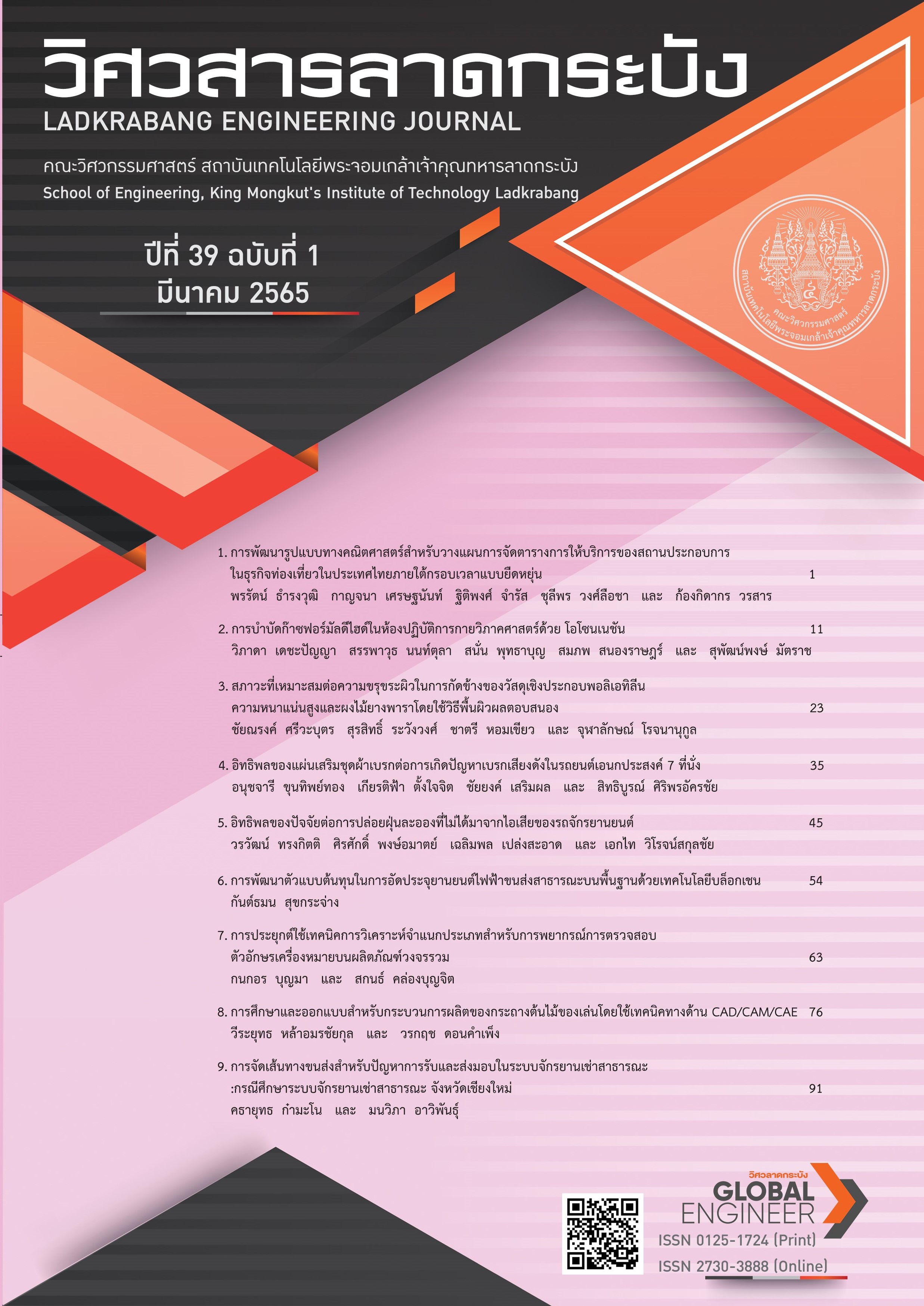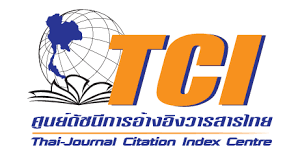The Developing Cost Model for Electric Public Transport Vehicles Charging Based on Blockchain Technology
Keywords:
Cost models, Charging, Electric Vehicles, Blockchain Technology, Queuing, SimulationAbstract
In the future, the rise of electric public transport vehicles influences on the decision to choose the charging station because the charging station is still insufficient to the demand for the number of electric public transport vehicles. Because the electric vehicles are friendly to the environment and the population rate has continued to increase so electric vehicles are essential for life as well. The researcher, therefore, sees the importance of developing a cost model to be applied to blockchain technology in decision making to choose a charging station under the conditions of the cost of price, distance, travel time, and waiting time of queues. These factors are important that cause cost. Therefore, the drivers should reduce unnecessary costs, speed up decision making and data is reliable and secure for complying with the current fast-paced situation. The study found that the most important deciding factor is the waiting time of the line that considered as the waste of cost that needed to happen. However, motorists should pay attention to every factor for the lowest total cost of service.
References
K. Sukkrajang, R. Duangsoithong and K. Chalermyannont, “Trade Distance and Price Model for Electric Vehicle Charging using Blockchain-based Technology,” in 2021 18th International Conference on Electrical Engineering/Electronics, Computer, Telecommunications and Information Technology (ECTI-CON), Chiang Mai, Thailand, May 19–22, 2021, pp. 964–967, doi: 10.1109/ECTI-CON51831.2021.9454741.
Z. Jin, R. Wu, X. Chen, and G. Li, “Charging guiding strategy for electric taxis based on consortium blockchain,” IEEE Access, vol. 7, pp. 144144–144153, 2019, doi: 10.1109/ACCESS.2019.2945081.
S. Nakamoto, “Bitcoin: A peer-to-peer electronic cash system,” Decentralized Business Review, pp. 21260, 2008.
L. Boongasame, “Introduction to Blockchain,” in Blockchain, 1st ed. Bangkok, Thailand: Paper Print, 2020, ch. 1, pp. 1.
A. Leemakdej, “Bitcoin and the birth of Blockchain 1.0,” in Blockchain Disruptive Business, Bangkok, Thailand: GREATidea co., 2020, ch. 1, pp. 15.
Digital Government Development Agency (Public Organization), “dictionary” in BlockChain for Government Services, 2nd ed. Bangkok, Thailand: DGA, 2021, pp. 13.
A. Kosba, A. Miller, E. Shi, Z. Wen and C. Papamanthou, “Hawk: The blockchain model of cryptography and privacy-preserving smart contracts,” in 2016 IEEE symposium on security and privacy (SP), San Jose, CA, USA, May 22–26, 2016, pp. 839–858, doi: 10.1109/SP.2016.55.
G. Zyskind and O. Nathan, “Decentralizing privacy: Using blockchain to protect personal data,” in 2015 IEEE Security and Privacy Workshops, San Jose, CA, USA, May 21–22, 2015, pp. 180–184, doi: 10.1109/SPW.2015.27.
B. Ramamurthy, “Blockchain basics” in Blockchain in action, Shelter Island, NY, USA: Manning Publications co., 2020, ch. 1, pp. 5–7.
E. Elrom, “Blockchain Basics” in The Blockchain Developer, Berkeley, CA, USA: Springer, 2019, ch. 1, pp. 9.
D. Yaga, P. Mell, N. Roby and K. Scarfone, “Blockchain technology overview,” National Institute of Standards and Technology, Gaithersburg, MD, Montgomery, Rep. NIST IR 8202, 2019, doi: 10.6028/NIST.IR.8202.
P. Ongkunaruk and R. Pisuchpen, “Let's get to know the account showing the basic process,” in Operations research, Bangkok, Thailand: Se-Ed Book Center Co., Ltd., 2013, ch. 9, sec. 9.2, pp. 233–243.
T. Rattnakool, K. Sukkrajang, P. Tucktern and P. Jantavee, “Queuing Analysis on The Payment Point for Electricity of Public Sector A Case Study: Chana District,” in The 8th Hatyai National and International Conference, Songkhla, Thailand, 2017, pp. 934–947.
M. Jizba, R. L. Cheu, T. Horak and H. Binova, “Analysis of screening checkpoint operations for transatlantic container transportation,” Journal of Transportation Security, vol. 8, no. 3, pp. 79–97, 2015, doi: 10.1007/s12198-015-0159-5.
S. L. Dorton and D. Liu, “Analysis of Airport Security Screening Checkpoints using Discrete Event Simulation,” in Proc. IIE Annual Conference, Orlando, FL, USA, 2012, p.1.
N. mahisanon, battery use is worth using, durable, 1st ed. Nonthaburi, Thailand: Core Function, 2019, pp. 116–117.
Electric vehicle market 2021 will grow, need to increase charging points to cover more (analysis), marketeeronline.com, Jan 26, 2022. [Online]. Available: https:// marketeeronline.com/ archives/212395.
M. U. Javed and N. Javaid, “Scheduling charging of electric vehicles in a secured manner using blockchain technology,” in 2019 International Conference on Frontiers of Information Technology (FIT), Islamabad, Pakistan, Dec. 16–18, 2019, pp. 2334–3141, doi: 10.1109/FIT47737.2019.00072.
M. Pustišek, A. Kos, and U. Sedlar, “Blockchain based autonomous selection of electric vehicle charging station,” in 2016 international conference on identification, information and knowledge in the Internet of Things (IIKI), Beijing, China, Oct 20–21, 2016, pp. 217–222, doi: 10.1109/IIKI.2016.60.
Rungrat Pisachaphen, “Queuing System Problem” in the Handbook of Simulation Modeling with ARENA, Bangkok, Thailand: Se-Ed Book Center Co., Ltd. 2010, ch. 3, pp. 67–70.
Recargo, Inc. “PlugShare” plugincars.com. https://www.plugincars.com/ev-charging-guide-for-businesses.html (accessed Aug. 26, 2021).
Y. Wang, Z. Su, Q. Xu and N. Zhang, “Contract based energy blockchain for secure electric vehicles charging in smart community,” in 2018 IEEE 16th Intl Conf on Dependable, Autonomic and Secure Computing, 16th Intl Conf on Pervasive Intelligence and Computing, 4th Intl Conf on Big Data Intelligence and Computing and Cyber Science and Technology Congress (DASC/PiCom/DataCom/Cybercides), Athens, Greece, 2018, pp. 323–327, doi: 10.1109/DASC/PiCom/DataCom/CyberSciTec.2018.00062.
Downloads
Published
How to Cite
Issue
Section
License
Copyright (c) 2022 Faculty of Engineering, King Mongkut’s Institute of Technology Ladkrabang

This work is licensed under a Creative Commons Attribution-NonCommercial-NoDerivatives 4.0 International License.
The published articles are copyrighted by the School of Engineering, King Mongkut's Institute of Technology Ladkrabang.
The statements contained in each article in this academic journal are the personal opinions of each author and are not related to King Mongkut's Institute of Technology Ladkrabang and other faculty members in the institute.
Responsibility for all elements of each article belongs to each author; If there are any mistakes, each author is solely responsible for his own articles.






